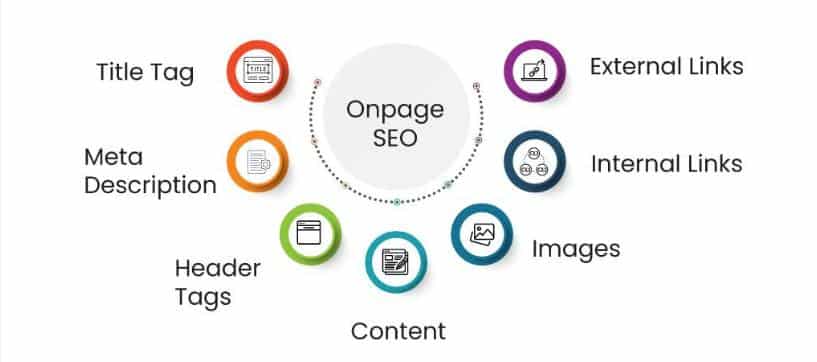Key Takeaways
- On-page SEO helps Google connect your business to local search queries.
- Use location keywords naturally in title tags, meta descriptions, and headers.
- Optimize images with descriptive file names, alt text, and geotags for local relevance.
- Keep internal links targeted toward localized landing pages.
- Maintain consistent NAP details across your site and directories.
- Showcase authentic local reviews to build trust and boost visibility.
Why On-Page SEO Matters for Local Search
On-page SEO encompasses all optimizations performed directly on your website to improve search engine rankings and user experience. In the context of local search, these elements ensure Google associates your business with relevant geographic queries, boosting your exposure to nearby customers. As more people use mobile devices to search “near me” or for local services, a strong on-page foundation is critical.
Investing in local SEO services Philadelphia can significantly improve how effectively your business reaches consumers in your area. Local search intent is stronger than ever: according to recent local search ranking factors, most users take action immediately after finding a nearby business online.
Crafting SEO-Friendly Title Tags and Meta Descriptions
Your page titles and descriptions are prime real estate in search results, acting as both an SEO signal and a marketing hook to draw clicks. Title tags and meta descriptions are your first opportunity to catch a potential customer’s attention in the search results. For local impact, include your city or neighborhood in these fields so Google can clearly associate your site with local queries. For example, a title tag might read, “Expert Plumber in Center City Philadelphia | Fast Service Guaranteed,” paired with a meta description like, “Trust our Philadelphia-based plumbers for reliable, same-day service in your area.”
Avoid keyword stuffing; weave your location naturally into titles and descriptions. Keep title tags around 60 characters and meta descriptions around 155-160 characters. This ensures search engines and users can easily understand what you offer and where you serve.
Structuring Headers and Content for User Engagement
Well-structured content is easy to scan for users and simple for search engines to understand. Utilize a single H1 tag for the page’s main topic, use H2s for broader sections, and H3s for supporting details. Each section should target specific questions or needs from your local audience, such as “What Are the Best Pizza Places in Old City, Philadelphia?” or “Affordable HVAC Services in South Philly.”
This structure allows you to address general and long-tail queries, increasing your chances of matching a user’s search intent. Clear, organized content boosts SEO and keeps visitors engaged and more likely to take action.
Optimizing Images and Multimedia for Local Relevance
High-quality images help establish authenticity and appeal to local customers. Use descriptive file names like “salon-wallingford-pa.jpg” and add alt text with location references e.g., “Modern hair salon in Wallingford, PA” to reinforce local relevance. For even more impact, consider using geotagged images that embed location data.
Displaying photos of your storefront, team members, or community events builds trust and shows you’re an active part of the area.
Internal Linking Strategies for Local SEO
Effective internal linking helps Google crawl your site and strengthens each page’s topical relevance. Link from blog posts or main service pages to localized landing pages, such as “/services/plumbing-philadelphia/”, to build authority for those key sections. Anchor text should be natural and relevant to guide users and search engines.
Well-placed links make it easier for visitors to find information, learn about all your offerings, and convert.
Consistent NAP (Name, Address, Phone) Information
Ensure your business name, address, and phone number are displayed consistently on every page, preferably in your website’s header or footer. Inconsistent NAP info can confuse customers and lead to search engine trust issues, hindering your local rankings.
Keep your NAP updated across your site and online directories. Accurate citations help search engines verify your business, leading to more trust and potentially higher map pack rankings.
Encouraging Local Reviews and Testimonials On-Page
Featuring customer reviews on your site serves two purposes: building trust with new visitors and sending local relevance signals to search engines. Collect authentic testimonials and display them using structured data markup so Google can incorporate ratings into your rich snippets.
Encourage happy clients to leave feedback after a transaction and spotlight their testimonials on landing pages for each location you serve. This will reinforce your reputation and keep your website content fresh.
Turning On-Page SEO into a Local Growth Engine
Mastering on-page SEO is more than just checking boxes for search engines it’s about building a user-friendly, trust-filled online experience that aligns perfectly with local search intent. Every optimized title tag, image alt text, and internal link works together to signal your relevance for nearby customers actively searching for your services. By maintaining consistent NAP details, strategically placing location-based keywords, and showcasing authentic local reviews, you position your business as the obvious choice in your market. In today’s competitive landscape, a well-executed on-page strategy doesn’t just improve rankings it drives real, measurable foot traffic and leads from your community.

